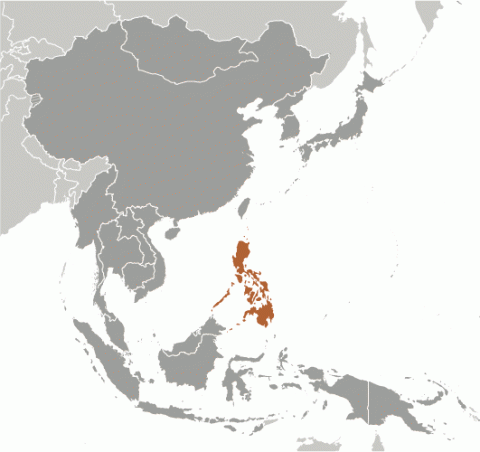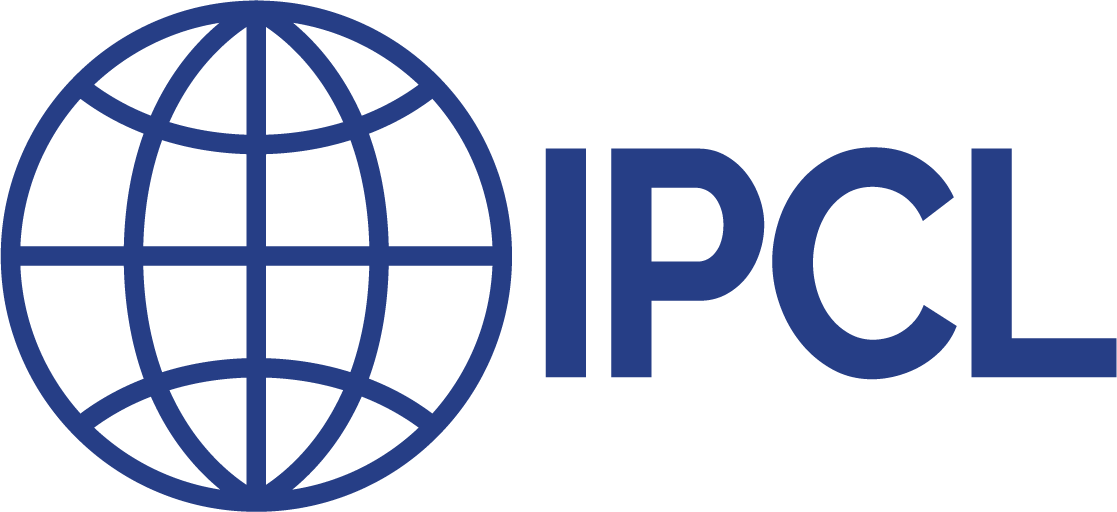Child Labor and Forced Labor Reports
Philippines


Moderate Advancement
In 2024, the Philippines made moderate advancement in efforts to eliminate the worst forms of child labor. The government issued Executive Order No. 67 to create the Presidential Office for Child Protection, which will oversee government efforts on child protection, particularly against online sexual exploitation of children and child trafficking. The National Committee Against Child Labor published the Situation of Working Children, a data hub on 25 child rights sub-dimensions, including protection from child labor. The government also established a new Child Labor Protection Unit in the Bangsamoro Autonomous Region in Muslim Mindanao and has continued to take strong enforcement actions against perpetrators of online commercial sexual exploitation. However, limited financial and human resources and training on enhanced investigation techniques hindered enforcement efforts. In addition, there is a lack of information on labor law enforcement efforts, including the number of child labor violations found and the number of child labor violations for which penalties imposed were collected.
| Children | Age | Percent and Population |
|---|---|---|
| Working | 5 to 14 | 1.9% (458,631) |
| Hazardous Work by Children | Unknown | Unavailable |
| Attending School | 5 to 14 | 92.0% |
| Combining Work and School | 7 to 14 | 2.0% |
| Sector/Industry | Percent of Population |
|---|---|
| Agriculture | 42.7% |
| Industry | 0.2% |
| Services | 57.1% |
| Sector/Industry | Activity |
|---|---|
| Agriculture | Producing sugarcane,† including growing, weeding,† harvesting,† cutting,† and carrying sugarcane bundles.† Also growing bananas, coconuts, corn, rice, rubber, and tobacco. Hog farming and deep-sea fishing.† |
| Industry | Mining† and quarrying,† including for gold. Also manufacturing pyrotechnics,† producing fashion accessories, and working in construction.† |
| Services | Domestic work and street work, including scavenging. |
| Categorical Worst Forms of Child Labor‡ | Commercial sexual exploitation, including use in the production of pornography, sometimes as a result of human trafficking. Forced domestic work and use in illicit activities, including drug trafficking. Recruitment of children by non-state armed groups for use in armed conflict. |
† Determined by national law or regulation as hazardous and, as such, relevant to Article 3(d) of ILO C. 182.
‡ Child labor understood as the worst forms of child labor per se under Article 3(a)–(c) of ILO C. 182.
Children at Higher Risk
Many children in the Philippines are victims of online sexual abuse and exploitation of children (OSAEC), in which children perform sex acts at the direction of paying foreigners and local Filipinos for live internet broadcasts that take place in small internet cafes, private homes, or windowless buildings sometimes referred to as cybersex dens. The sector is highly profitable and growing due to increasing internet connectivity, widespread English language literacy, gaps in existing legislation and financial systems, and high international demand. Twenty percent of internet-using children between the ages of 12 and 17 in the Philippines have been exploited in OSAEC based on 2021 data. Children, primarily girls, from rural communities and disaster-affected areas, are also subjected to domestic trafficking in urban centers and tourist destinations for the purposes of domestic work and sex trafficking, and traffickers exploit these children in other forms of forced labor. As the Philippines is vulnerable to natural disasters, including typhoons, tsunamis, volcanic activity, droughts, and erosion, an increasing number of children may be exposed to child labor. Additionally, the recruitment and use of children by non-state armed groups, primarily the New People’s Army and Dawla Islamiyah, remains a concern in the country. These children are used in both combat and non-combat roles, including as supply officers, medics, and cooks, and for running errands.
Barriers to Education Access
Although the Constitution establishes free, compulsory education through age 18, unofficial school-related fees, such as for school uniforms, are prohibitive for some families. Other barriers to education include substandard infrastructure, which makes traveling and access to schools challenging, especially for children in rural areas, and architectural barriers that pose challenges for children with disabilities.
| Standard | Age | Meets International Standards | Legislation |
|---|---|---|---|
| Minimum Age for Work | 18 | ✓ | Article 139 of the Labor Code; Sections 12 and 16 of the Special Protection of Children Against Child Abuse, Exploitation and Discrimination Act; Section 16 of the Act Instituting Policies for the Protection and Welfare of Domestic Workers |
| Minimum Age for Hazardous Work | 18 | ✓ | Article 139 of the Labor Code; Section 12-D of the Special Protection of Children Against Child Abuse, Exploitation and Discrimination Act |
| Identification of Hazardous Occupations or Activities Prohibited for Children | ✓ | Department Orders 149 and 149A on Guidelines in Assessing and Determining Hazardous Work in the Employment of Persons Below 18 Years of Age; Sections 12-D and 14 of the Special Protection of Children Against Abuse, Exploitation and Discrimination Act | |
| Prohibition of Slavery, Debt Bondage, and Forced Labor | ✓ | Sections 3, 4, and 10 of the Expanded Anti-Trafficking in Persons Act; Sections 12-D and 16 of the Special Protection of Children Against Abuse, Exploitation and Discrimination Act | |
| Prohibition of Child Trafficking | ✓ | Sections 3, 4, and 10 of the Expanded Anti-Trafficking in Persons Act; Sections 12-D and 16 of the Special Protection of Children Against Abuse, Exploitation and Discrimination Act | |
| Prohibition of Commercial Sexual Exploitation of Children | ✓ | Section 11 of the Free Internet Access in Public Places Act; Sections 12-D and 16 of the Special Protection of Children Against Abuse, Exploitation and Discrimination Act; Sections 3, 4 and 10 of the Cybercrime Prevention Act; Sections 4 and 10 of the Anti-Online Sexual Abuse or Exploitation of Children and Anti-Child Sexual Abuse or Exploitation Materials Act | |
| Prohibition of Using Children in Illicit Activities | ✓ | Sections 12-D and 16 of the Special Protection of Children Against Abuse, Exploitation and Discrimination Act; Sections 5 and 8 of the Comprehensive Dangerous Drugs Act | |
| Minimum Age for Voluntary State Military Recruitment | 18 | ✓ | Section 12 of the Providing for the Development, Administration, Organization, Training, Maintenance and Utilization of the Citizen Armed Forces of the Philippines, and for Other Purposes Act |
| Prohibition of Compulsory Recruitment of Children by (State) Military | ✓* | Section 14 of the Providing for the Development, Administration, Organization, Training, Maintenance and Utilization of the Citizen Armed Forces of the Philippines, and for Other Purposes Act | |
| Prohibition of Military Recruitment by Non-state Armed Groups | ✓ | Sections 12-D, 16, and 22 of the Special Protection of Children Against Abuse, Exploitation and Discrimination Act | |
| Compulsory Education Age | 18‡ | ✓ | Section 4 of the Enhanced Basic Education Act |
| Free Public Education | ✓ | Section 2 of the Constitution of the Republic of the Philippines |
* Country has no conscription
‡ Age calculated based on available information
In 2024, the government issued Executive Order No. 67, which created the Presidential Office for Child Protection and mandates the new executive office to oversee and harmonize government efforts on child protection, particularly against online sexual exploitation of children and child trafficking.
| Organization/Agency | Role & Activities |
|---|
| Department of Labor and Employment (DOLE): Bureau of Working Conditions (BWC) manages the labor inspection program that oversees inspections conducted by DOLE regional offices nationwide. BWC also oversees training of labor inspectors, manages the DOLE Labor Inspection Management Information System, and responds to queries and complaints regarding labor standards and working conditions, including tips on potential child labor cases, received through the DOLE 1349 hotline. DOLE inspects establishments and monitors compliance with labor laws in the formal sector. Bureau of Workers with Special Concerns (BWSC) oversees the Profiling Child Laborers Initiative, a program to identify child laborers and remove them from child labor situations. DOLE is mandated to develop policies, programs, and systems that champion the development and protection of disadvantaged workers by contributing to their decent and productive employment. BWSC also provides advisory and technical assistance to the Labor Secretary and regional offices. Additionally, it oversees the Rescue the Child Laborers Quick Action Teams (Sagip Batang Manggagawa) that detect, monitor, and rescue child laborers in hazardous conditions. During the reporting year, DOLE identified 160,288 child laborers and held events to raise awareness about child labor. In October 2024, DOLE held an event for the signing of the Memorandum of Agreement between stakeholders to exert more efforts to prevent child labor and promote acceptable conditions of work. |
| Criminal Law Enforcement Agencies: The Philippine National Police investigate and assist in the prosecution of cases related to the worst forms of child labor. Their Women and Children Protection Center (WCPC) enforces laws against child trafficking and commercial sexual exploitation of children. From January to December 2024, the Philippine National Police conducted 148 operations in online sexual exploitation of children that resulted in the arrest of 64 suspects and rescue of 227 victims. WCPC operates 1,913 Women and Children Protection Desks nationwide with 5,478 personnel. The National Bureau of Investigation investigates and prosecutes child labor cases and child sex trafficking cases and operates a national Task Force on the Protection of Children from Exploitation and Abuse. From January to June 2024, the National Bureau of Investigation arrested 52 individuals involved in online child exploitation and child trafficking while 77 children were rescued. The Philippine Drug Enforcement Agency enforces the Comprehensive Dangerous Drugs Act, maintains a national hotline for reporting cases of children used in illicit activities, and coordinates with the Department of Social Welfare and Development (DSWD) to assist during rescue operations. A lack of resources, including staff, is an area of concern within law enforcement agencies because it impedes their ability to act quickly upon complaints of child labor, including OSAEC, in both investigations and prosecutions. In past years, children who participated in drug trafficking were subjected to extrajudicial killings and incarceration. Although the number of extrajudicial killing and incarceration of children in drug trafficking has declined under the new government, some children continue to be treated as perpetrators rather than survivors of the worst forms of child labor crimes. |
| Overview of Enforcement Efforts | 2024 |
|---|---|
| Has a Labor Inspectorate | Yes |
| Able to Assess Civil Penalties | No |
| Routinely Conducted Worksite Inspections | Yes |
| Unannounced Inspections Permitted | Yes |
| Has a Complaint Mechanism | Yes |
| Imposed Penalties for Child Labor Violations | Unknown |
| Conducted Criminal Investigations for Worst Forms of Child Labor Crimes | Yes |
| Imposed Penalties for Worst Forms of Child Labor Crimes | Yes |
In 2024, 1,210 labor inspectors conducted 30,099 worksite inspections, with an unknown number of child labor violations found. There were also 13 investigations into suspected worst forms of child labor crimes, with 6 prosecutions initiated and 3 perpetrators convicted.
| Coordinating Body | Role & Activities |
|---|
| National Council Against Child Labor (NCACL): Chaired by DOLE and co-chaired by DSWD, comprises 19 government agencies and organizations. Coordinates national efforts to combat child labor and implements the Philippine Program Against Child Labor. Promotes information-sharing at the national, regional, and provincial levels, and is tasked with establishing and disseminating a child labor reporting mechanism for use by local and national authorities. In 2024, met regularly to discuss efforts to address child labor, including monitoring and improving the Child Labor Knowledge Sharing System website and helpline for reporting child labor. |
| Policy | Description & Activities |
|---|
| Philippine Program Against Child Labor Strategic Framework (2023–2028): Aims to gradually reduce child labor through consultations with government institutions, local and international NGOs, civil society organizations, faith-based groups, professional associations, academia, the private sector, parents, and children. Implementation of the framework is led by NCACL, with DOLE serving as Chair and DOLE’s BWSC and BWC as Joint Secretariat. During the reporting year, technical working groups met at least 23 times from January to November to discuss communication plans for the framework, to plan and hold World Day Against Child Labor, and to coordinate awareness-raising events. |
| Fourth National Plan of Action for Children (2023–2028):* Aims to enhance the protection and welfare of children, especially the most vulnerable. Developed by the Council for the Welfare of Children with UNICEF’s support, the plan focuses on several key areas. It emphasizes establishing robust systems to create a safe, nurturing environment for children, including effective laws, policies, and trained staff. The plan adopts a holistic approach to combating OSAEC. During the reporting year, in partnership with UNICEF, the Philippines began developing a Child Protection Systems Strengthening system to standardize child protection frameworks nationwide, addressing gaps in enforcement and accountability caused by fragmented laws and regional disparities in resources and governance. |
| National Strategic Action Plan Against Trafficking in Persons (2023–2027): Mandated to prevent and suppress human trafficking, including OSAEC, and provide services to survivors, including rehabilitation, and reintegration into society through four key result areas: (1) prevention, (2) protection and reintegration, (3) prosecution and law enforcement, and (4) partnership and networking. Chaired by the Secretary of the Department of Justice and co-chaired by the Secretary of DSWD, employs a multi-stakeholder approach to fight human trafficking. The National Strategic Action Plan laid the groundwork for criminal enforcement agencies to carry out operations to combat online sexual abuse and exploitation of children. |
* Policy was approved during the reporting period.
† The government had other policies that may have addressed child labor issues or had an impact on child labor.
| Program | Description & Activities |
|---|
| Anti-Child Labor Programs: The Child Labor Prevention and Elimination Program‡ is a DOLE anti-child labor program that implements local awareness-raising campaigns, institutes child labor-monitoring mechanisms, and requires neighborhoods to develop child labor elimination plans. Includes a provision of livelihood assistance to parents of child laborers. Project Angel Tree‡ is a social service with local government agency benefactors, known as "angels," who provide educational supplies to communities. The Livelihood for Parents of Child Laborers (Kabuhayan para sa Magulang ng Batang Manggagawa)‡ is a DOLE program that provides livelihood assistance to parents, guardians, or other family members of child laborers. It seeks to prevent and eliminate child labor by providing necessary materials to start a livelihood undertaking. The Pantawid Pamilyang Pilipino Program (Conditional Cash Transfer Program)‡ is a DSWD national poverty reduction program that provides conditional grants, local awareness-raising campaigns, and child labor-monitoring mechanisms to assist poor families with children’s access to health care, adequate nutrition, and education. In 2024, these programs remained active and provided livelihood assistance and services to child laborers and their families. |
| Strategic Helpdesks for Information, Education, Livelihood and Other Developmental Interventions for Child Laborers (SHIELD Against Child Labor):‡ DSWD-led project implemented in 14 barangays in Catanauan, Labo, Jose Panganiban, Paracale, Kananga, and Ormoc City. Comprises three components: Child Labor Local Registry; Helpdesk and Convergence of Services; and Advocacy, Organizing, and Capacity Building. Focuses on areas with a high child labor incidence rate, with interventions based on data from the Child Labor Local Registry. Aims to eliminate the worst forms of child labor in the small-scale gold mining, deep-sea fishing, and sugarcane industries. During the reporting year, 1,107 child laborers received services through this program. |
| Recovery and Reintegration Program for Trafficked Persons:‡ DSWD and Inter-Agency Council Against Trafficking program that provides recovery and reintegration services to survivors of human trafficking and raises awareness in vulnerable communities. Includes the National Referral System, which strengthens coordination among agencies providing services to human trafficking victims using standard referral and reporting forms. The government did not report on any actions to implement the program during the reporting period. |
‡ Program is funded by the Government of the Philippines.
† The government had other social programs that may have included the goal of eliminating or preventing child labor.
| Area | Suggested Action |
|---|---|
| Enforcement | Establish a mechanism to assess civil penalties for child labor violations. |
| Increase the number of labor inspectors from 1,210 to 3,137 to provide adequate coverage of the labor force of approximately 47 million people. Increase human and financial resources to provide sufficient coverage of the workforce in all provinces, including in the informal sector in which child labor is prevalent, and enhance training for labor inspectors and investigators to improve enforcement efforts. | |
| Allow Rescue the Child Laborers Quick Action Teams to conduct unannounced compliance visits to private homes to ensure that there are no child domestic workers being illegally employed. | |
| Publish information on labor law enforcement efforts, including the number of child labor violations found and the number of child labor violations for which penalties imposed were collected. | |
| Enhance efforts to prevent the inappropriate incarceration of, and violence against, children suspected to be participating in the production and trafficking of drugs and those caught in the crossfire during anti-drug operations. | |
| Prosecute law enforcement officials and civilians responsible for the killing of children engaged in the drug trade, and prosecute officials who are complicit in trafficking. | |
| Develop procedures to allow for the efficient collection of restitution from convicted human traffickers and ensure the restitution is transferred to their victims. | |
| Social Programs | Increase access to free, compulsory education by eliminating unofficial school-related fees and addressing inadequate school infrastructure, especially for children in rural areas and children with disabilities. |
| Publish information on specific activities undertaken to implement the Recovery and Reintegration Program for Trafficked Persons on an annual basis. | |
| Develop programs to increase protections for and provide assistance to child trafficking victims who are exploited for the purposes of domestic work and commercial sexual exploitation, particularly children from rural communities. | |
| Develop programs to increase protections for and provide assistance to children engaged in drug trafficking and children impacted by the death of a familial breadwinner to address their heightened vulnerability to child labor. | |
| Ensure that youth rehabilitation centers, including Houses of Hope (Bahay ng Pag-asa), are accredited and in compliance with standards set by the Department of Social Welfare and Development and the Juvenile Justice and Welfare Council. |

















